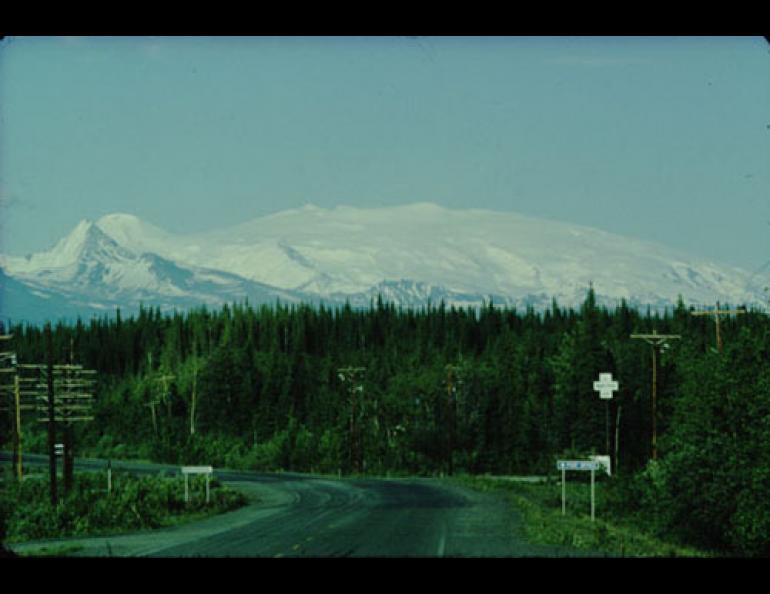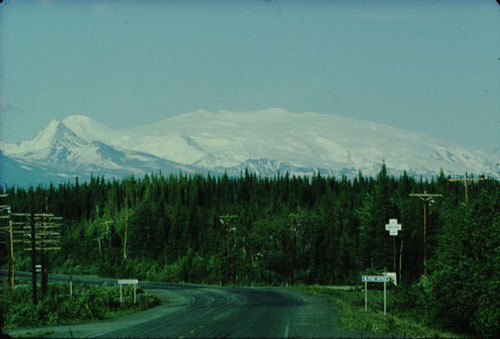
Sumatra earthquake shakes up Alaska volcano
Energy from the giant Sumatra earthquake traveled 7,000 miles to shake up an Alaska volcano.
Mount Wrangell experienced “a small flurry of events” about one hour after the magnitude 9.0 earthquake struck off the coast of Sumatra on Dec. 26, 2004, according to John Sanchez of the Alaska Volcano Observatory. Sanchez checked out a number of Alaska volcanoes for increased activity following the giant earthquake and he found that Mt. Wrangell, a 14,163-foot volcano about 50 miles east of Copper Center, shook with at least 12 tiny earthquakes as the energy waves from across the globe passed through the mountain during a 10 minute-period.
“It’s very unlikely that this group of events, spaced regularly in time, happened just by chance,” Sanchez said. “We think the earthquake gave the volcano a little nudge that allowed these events to happen.”
Large earthquakes often trigger volcanic activity—the 7.9 Denali Fault earthquake in 2002 triggered similar unrest in volcanic features at Yellowstone and northern Mexico—but the Sumatra-Mt.Wrangell connection covers more than one quarter of the globe.
“If in fact seismicity at Wrangell was triggered by the Sumatra quake, this would be the long-distance record at about 11,000 kilometers (about 7,000 miles),” Sanchez said.
Wrangell has a quirky history of earthquakes stirring it up or shutting it down. Geophysical Institute professor emeritus Carl Benson noted how Wrangell’s north crater heated up after the 1964 Alaska earthquake, and Sanchez and his colleagues, including Steve McNutt of the Alaska Volcano Observatory, noticed that the number of Wrangell’s internal earthquakes decreased for five months after the Denali Fault earthquake. Wrangell’s apparent sensitivity to earthquakes could be due to weak points within the mountain or fluid-filled cavities that react to shaking in different ways, the researchers said.
Scientists at the volcano observatory checked seismicity at other Alaska volcanoes, including those that make up the Aleutian Islands and those at Katmai National Park, but found Wrangell was the only Alaska volcano that seemed to react to the Sumatra earthquake—the world’s largest since Alaska’s Good Friday Earthquake in 1964, which had a magnitude of 9.2.
The energy that triggered the activity at Wrangell traveled from Sumatra as “surface waves,” Sanchez said. All 12 earthquakes occurred in sync with the waves from Sumatra, which were about 30 seconds apart. When the immense India plate slipped beneath the Burma plate, waves of energy traveled from Sumatra to Alaska mostly through the Earth’s crust. The surface waves traveled along the ground through China, Russia, and across the Bering Strait to Alaska, reaching Mount Wrangell about one hour after the earthquake struck off the coast of Sumatra. Though the Earth rang like a bell for days after the giant earthquake, only people closer to the epicenter felt the surface waves, Sanchez said. Glennallen and other areas around Mount Wrangell rose about two centimeters (almost an inch) when the earthquake’s surface waves passed.
Four seismometers cemented into Mount Wrangell’s summit recorded the arrival of the surface waves and the small internal earthquakes that followed. Through radio and satellite hookups the information instantly arrived at Sanchez’s workplace, the Alaska Volcano Observatory at the Geophysical Institute in Fairbanks. The AVO office in Anchorage also received the same information. McNutt, on Christmas break in the Lower 48, called Sanchez and told him to check on Wrangell’s possible response to the earthquake. Sanchez has included details of how the Sumatra earthquake affected Mount Wrangell in an appendix to his recently finished Ph.D. thesis, and his colleagues Mike West and McNutt plan to share the latest of Mount Wrangell’s reactions to large earthquakes at an April meeting of other professional volcano watchers.





